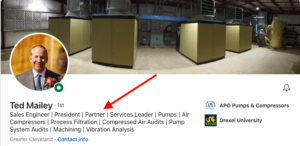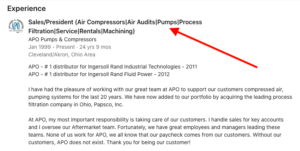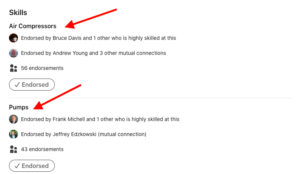Have you ever wondered how LinkedIn determines the order of search results?
All LinkedIn will tell us is their algorithm is based on relevancy to the searcher—but if you read their explanation of relevancy to the searcher, you'll probably come away more confused than ever!

The bottom line is this is their secret sauce, and they're not about to share all the ingredients with their users.
However, because I spend 40+ hours each week helping people capitalize on LinkedIn, I've tested thousands of profiles, and I've figured out a few things that I'd like to share with you.
In my opinion, putting the right keywords in the right places on your LinkedIn profile is your ticket to getting closer to the top of the search results when people are searching for someone like you.
By the way, I'll be discussing the keyword optimization steps as well as lots of tips, tricks, and strategies for growing your brand and making more money at my virtual workshop Using LinkedIn to Generate a Steady Stream of Sales Prospects. The workshop will be on October 9, noon-2pm CT. No worries if you're busy, because all registrants will receive a recording of the session.
.
What are your most important keywords?
Simply put, your keywords are the words you think someone would use to search for you online, regardless of whether it's a general internet search site like Google, a job search site like Career Builders or Indeed, or a professional networking site like LinkedIn.
Depending on your objective for using LinkedIn, it could include words that describe you professionally, categories or brand names of the products and services you and your company provide, specific skills you possess, the software you use proficiently, titles you have held, and so on.
If you're looking for a new job, these keywords can be found in the job postings that you're interested in.
My Keyword Worksheet (below) will help you identify the best words to include on your profile.
.
Where should you put keywords on your LinkedIn profile?
The simple answer is everywhere you can—and the more times the better—but be sure your profile remains easy to read. Just listing a particular keyword over and over, with commas in between, will not only be hard to read but potentially confusing to the reader.
In addition, LinkedIn has warned that this type of "keyword stuffing" will not be tolerated—and you sure don't want them to penalize you by moving you down the search results list.
From working extensively with my LinkedIn clients over many years, I've learned there are three spots on your profile where you definitely want to include your most important keywords—your Headline, Experience-Job Titles, and the Skills section.
To learn how to most effectively include keywords in these three sections, take a look at my client Ted Mailey's profile. He's president of APO Pumps & Compressors, a Cleveland area distributor of air compressors and related equipment.
Headline
Experience-Job Titles
Skills
Trust me on this one. Follow through on this critical strategy, and you'll come up significantly higher in the search results, just like my client Ted Mailey.
To identify your most important keywords, review or download my Keyword Worksheet below.
REMINDER: Using LinkedIn to Generate a Steady Stream of Sales Prospects Workshop
If you'd like to learn more simple ways to not only improve your search ranking but to find and connect with more prospects, grow your brand, raise awareness of your nonprofit, and make more money with LinkedIn, register now for my upcoming two-hour workshop on October 9. Click here to get more details and register. And remember—if you aren't able to attend the live virtual event, your registration includes a link to the recording.


